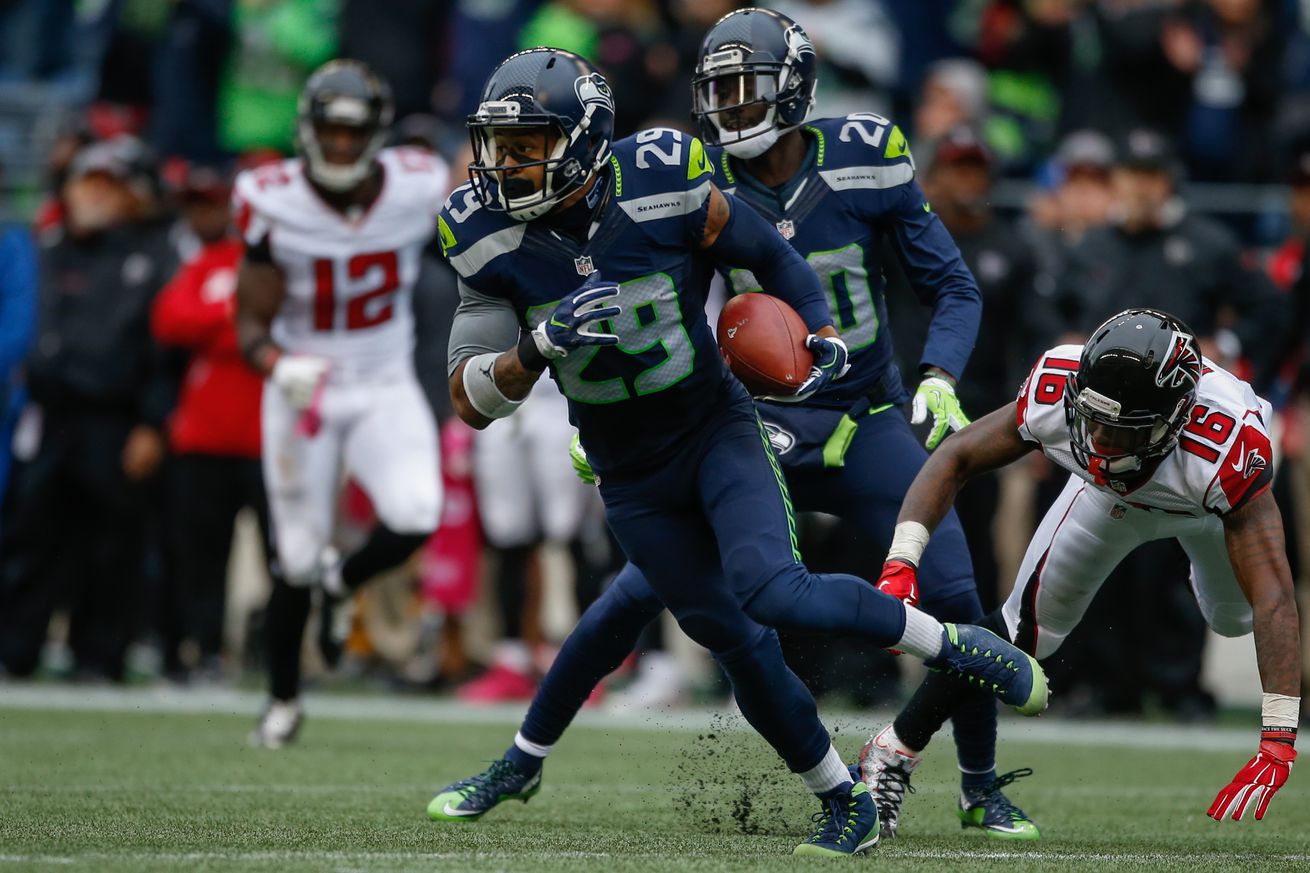
Much has been made about the Seattle Seahawks defense’s performance without Earl Thomas, the potential for 2018 and beyond without him, and how much better equipped they are to (hypothetically) maintain a high level without him a second time around.
But the underlying question surrounding these topics, and pretty much any conversation involving Thomas is: Why are they seemingly in such a rush to move on?
If there’s hesitance to hand out what would likely be the largest contract to a safety in league history, less than a year after Seattle was burned by extending Kam Chancellor, that’s understandable from the team’s point of view. But frankly, if it’s just an issue of cost, it’s still worth it. When Earl Thomas is on your roster, you do whatever it takes to keep Earl Thomas on your roster.
Perhaps the best argument to be made for not handing out a market setting deal to Thomas is the third point made above — how much better equipped the Seahawks are to survive without him. Bradley McDougald can slide into the free safety spot with ease and Delano Hill can takeover at strong safety. But just because Jimmy Garoppolo could’ve slid into the New England Patriots’ starting QB spot didn’t mean they were in a rush to trade a Hall of Fame player in Tom Brady. And that’s exactly what Thomas is. A player who will be enshrined in Canton five years after his career has concluded.
At just 29 years old, Thomas is nowhere near the end of his peak or his playing career. He hasn’t put his body through the same as Chancellor or other players who thrive around the line of scrimmage. There’s no reason to expect a decline is coming for a player as transcendent as Thomas. The safeties who were enshrined in Canton ahead of Thomas prove it.
Currently, there are nine safeties from the modern era (post-merger) in the Pro Football Hall of Fame and a tenth, Ed Reed, will be joining them in 2019. Those safeties are: Brian Dawkins, Kenny Easley, Ken Houston, Paul Krause, Ronnie Lott, Roger Wehrli, Larry Wilson, Willie Wood and Rod Woodson.
Thomas’s résumé through eight seasons is that of a safety well on track to be the eleventh safety enshrinee. The nine current Hall of Fame safeties averaged seven All-Pro selections (first or second team) and nine Pro-Bowl appearances. Granted, Pro-Bowl appearances have become trivial in the last decade, but they remain a good indicator of a player’s longevity. Rounding out the personal accolades of a Hall of Fame safety: Just three won a Defensive Player of the Year award (Woodson, Wilson, Easley), while eight of nine were named to a team of the decade.
As it stands, Thomas has been named an All-Pro six times, voted to the Pro-Bowl five times and will surely be lined up next to Eric Berry on the team of the 2010s. Although Thomas is yet to win a Defensive Player of the Year award — the closest he came was in 2013 — he was the lifeblood of a defense on a team that had a dominant run, much like Lott with the San Francisco 49ers.
When looking over the résumés of Hall of Fame safeties, the group’s longevity and staying power at the top of their position is what really stood out. At just 29 years old, it’s also what makes the idea of moving on from Thomas nonsensical.
On average, the final year Hall of Fame safeties earn All-Pro status is in their age 33 season, while they continue playing until after their age 35 season. The individual seasons are even more impressive: Woodson (37), Houston (35) and Dawkins (36) all were named to their final All-Pro team well past retirement age.
With the exception of Easley, whose career was cut short, every single safety in the Hall of Fame was named to their final All-Pro team at an age older than what Thomas is now. So even if Thomas only reaches the averages of the Hall of Fame safeties, a four-year extension would see him be at or near the top of his position even in the tail end of a third contract.
It’s understandable for a team to be concerned about paying Thomas a record setting deal for his position on what would be his third contract; it becomes less understandable when there’s every indication he will remain worth the money well into the life of the contract, as the rest of the market (once again) passes him by.
Of course every player’s career is different. Careers are getting shorter as players become wiser and more aware of the affects of playing football. Plus, Thomas is different and there’s a chance the same player who spoke about retirement in 2016 could still have it on his mind in 2019 or 2020. But as long as he’s playing football, Thomas is a Hall of Fame talent. On Seattle’s defense, he’s the player that the rest of the group lives and dies by. With one year left on his current deal and trades rumors whirling, the Seahawks would be smart to lock down a generational player through the peak of his Canton-bound career.


